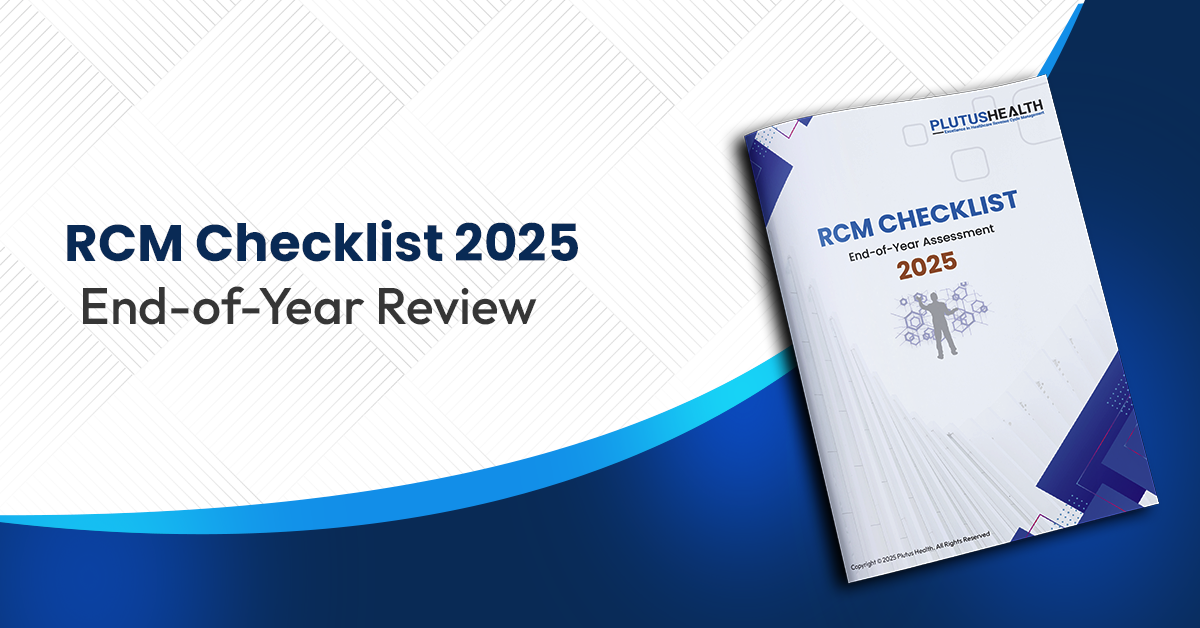5 Strategies to Maximize Patient Engagement and Reimbursements for ASCs
With Covid-19 cases often taking up the majority of space in hospitals, medical facilities around the country are unable to care for their patients at a high level. Worse still, reimbursements have fallen due to the number of applicants for care and the number of people who have lost their jobs and employee health benefits.
Ambulatory surgery centers (ASCs) find themselves at acritical juncture. The facilities saw a 28% increase in the percentage of outpatient procedures performed from 2005 to 2017. Pandemic conditions look to increase this surge as experts predict a 6-7% growth in ASC procedures through 2021. The window for skyrocketing in popularity is here. However, poorly handling said window will only lead to mistrust from the public and decreased revenue.
Learn how your ASC can find patient engagement solutions while maximizing reimbursements.
Employ Consistent Standards
Regardless of your organization’s financial status, clear, consistent standards are a feature everyone can employ. Like all customers, medical client expectations are set by what you tell them. If your team is promising a great outcome to a procedure, a good result will seem disappointing. Setting realistic expectations across the board will immediately boost patient satisfaction.
Additionally, ensure your staff is on the same page in terms of work practices. Medical standards exist for a reason and deviating from them can have short and long-term consequences. Also, patients will feel a safe sense of familiarity if you remain consistent with their treatment.
Adopt Better Technology
Medical personnel won't go away any time soon. Their expertise and spur-of-the-moment decision-making are the glue that binds the health industry. At the same time, it is important to phase out outdated methods and embrace successful technology.
Effective technology reduces stress on workers while increasing the efficiency of treatment. Consider improving your electronic health record. Ensuring your system is compatible with others makes it easier to transmit and receive important information on patient health.
Embrace Online Options
With the many hospitals at capacity and heightened fear of infection, it’s imperative that providers have a way to talk to clients outside of a physical building. Telehealth chats are a great way to let a doctor learn about a medical problem and give feedback. These virtual visits give patients access to specialists far away and reassure them that help is constant and near at hand. Plus, telehealth is cheaper for both the patient and the provider.
Improve Communication
The availability of online sources of medical knowledge has given rise to patients who are generally more informed than previous generations. However, this knowledge has instilled some with a false sense of confidence that can harm their physician's authority. It is, therefore, crucial for physicians to listen and calmly explain their position. Identifying why a patient believes a treatment will be best is the first step towards adopting that treatment or refocusing their passions to a new area.
Communication is equally important between departments. When different sectors of the same organization fail to communicate, the patients suffer. This suffering amplifies in situations where one group needs resources and tells their supplier the wrong figure. To avoid this problem, have your groups meet and agree on consistent guidelines in terms of language and requests.
Boost Revenue Cycle Management
With the number of patients hospitals are admitting, administrators find it challenging to process every visitor. Many people are unable to provide an insurance card and don’t know what their coverage is. As such, it can be tempting to do charity write-offs to meet workflows. However, hiring an effective billing and coding service can significantly increase your revenue collected.
Additionally, improving your technology helps streamline processes for patients and ensures administrative information is complete. Artificial intelligence and complex workflow programs walk physicians and clients through submitting crucial information for billing and medical examination. When done properly, these systems increase revenue and improve patient experience and care.
Companies like Plutus Health are a great option when you need to decrease your administrative burden and streamline your processes, helping you focus on patients care and maximize reimbursements. If you are struggling with billing, collection, and management, our expert team takes care to get the fastest reimbursement possible and increase your practice’s performance.
Key Takeaways
1. Be consistent in handling patients and in following medical practices.
2. Bring in better technology to improve your staff and patient experience.
3. Use telehealth services to reach people unable to attend your physical location.
4. Strengthen communication with patients and between departments.
5. Hire a coding and billing company to get reimbursements quicker.
Liked the blog? Share it
FAQs


ABA providers are grappling with high staff turnover (up to 65%), rising burnout, administrative overload, and stagnant reimbursement rates. These challenges directly impact care continuity, clinical outcomes, and operational performance.


Operational inefficiency costs ABA teams up to 10 hours per staff member per week, contributing to burnout, denied claims, and longer accounts receivable (A/R) cycles. These inefficiencies ultimately result in reduced revenue and patient dissatisfaction.


Burnout leads to costly turnover, lower client retention, and decreased productivity. Recruiting and replacing a BCBA or RBT can cost up to $5,000 per hire, plus months of lost revenue and disruption to morale.


High-performing ABA organizations invest in clear career pathways for BCBAs and RBTs, align compensation with market benchmarks, and foster peer-led mentorship, flexible schedules, and wellness programs.


Automation tools like Plutus Health's Zeus streamline eligibility verification, denial management, and billing, reducing manual workloads by 5–10 hours weekly per clinician and improving clean claim rates by 95%.


Outsourcing revenue cycle management can improve collections, reduce denials by up to 30%, and free clinicians from billing-related admin tasks, resulting in better client care and financial outcomes.


One $200 million ABA network partnered with Plutus Health to automate eligibility and accounts receivable (A/R) processes. The result: $2M reduction in legacy A/R and a 97% Net Collection Rate.


By improving operational efficiency, investing in technology, and ensuring workforce stability, ABA leaders can align outcomes with reimbursement. Plutus Health supports this transition with scalable RCM and automation strategies.
FAQs


ABA therapy billing is the process of submitting claims to insurance or Medicaid for Applied Behavior Analysis services provided to individuals with autism or developmental disorders. It includes using correct CPT codes, proper documentation, and adherence to payer-specific policies.


Common CPT codes for ABA therapy in 2025 include:
- 97151 – Assessment and treatment planning
- 97153 – Direct therapy with the patient
- 97155 – Supervision and modification of behavior plan
- 97156 – Family adaptive training
- Always check with payers for any annual changes.


To bill Medicaid for ABA services, providers must ensure credentialing is complete, services are pre-authorized, and claims use the correct codes and modifiers. Medicaid requirements vary by state, so always follow state-specific billing rules.


Common ABA billing mistakes include:
- Incorrect or missing CPT codesplan
- Lack of documentation or treatment
- Uncredentialed providers rendering services
- Submitting duplicate or late claims


Without proper credentialing, providers can’t get reimbursed. Insurance and Medicaid require that BCBAs, RBTs, and organizations are credentialed and contracted. Delays in credentialing often cause revenue losses and claim rejections.
FAQs


CMS proposes a 2.4% increase in Medicare ASC payment rates, contingent on meeting ASCQR quality reporting requirements. Plutus Health helps ASCs meet these compliance benchmarks by integrating quality reporting data into RCM workflows, ensuring eligibility for full payment updates.


The ASC Covered Procedures List will expand by 547 procedures, including cardiology, spine, and vascular surgeries. Plutus Health supports expansion into new service lines by customizing RCM processes for high-acuity procedures, minimizing claim denials during the transition.


Site-neutrality narrows the payment gap with hospital outpatient departments, enhancing ASCs' cost-efficiency appeal. Plutus Health helps leverage this advantage in payer negotiations by providing performance dashboards and cost-justification analytics to secure stronger reimbursement terms.


Complex procedures increase denial risk and slow cash flow. Plutus Health's automation-first RCM model delivers 95%+ clean claim rates, reduces A/R days, and safeguards margins, even as your case mix becomes more complex.
FAQs


A hybrid RCM model combines in-house tasks like scheduling, intake, and patient communication with outsourced billing support for claims, denials, and A/R follow-up. Plutus Health enables this model with automation and expert teams.


Frequent CPT code updates, variable session lengths, high no-show rates, and sensitivity around patient collections make behavioral health billing uniquely challenging. Hybrid RCM helps strike a balance between compliance and patient care.


Tasks requiring patient interaction—like intake, eligibility checks, copay collection, and documentation—are best kept in-house, while backend processes can be outsourced.


Outsourcing denial management, claims scrubbing, and payment posting improves clean claim rates, reduces A/R days, and scales capacity without adding staff.


Plutus Health delivers 97%+ clean claim rates, AI-powered denial prediction, and 48-hour claim turnaround. Our hybrid RCM solutions provide behavioral health CFOs with visibility and control, while enhancing financial performance.
FAQs


Payment complexity, high out-of-pocket costs, increasing denials, and value-based care requirements are pushing providers toward more transparent, tech-supported payment systems.


Patients now act like consumers. They expect clear cost estimates, simple bills, digital payment options, and flexible financing.


AI, automation, and digital tools streamline estimates, reduce denials, support payment plans, and allow faster collections through mobile and online payments.


Complex billing questions, insurance confusion, and financial stress require a compassionate approach. Advocates guide patients and protect trust in clinical care.


Plutus Health supports providers with AI-driven denial prevention, predictive analytics, digital payment tools, patient financing, and a seamless platform, such as AnodynePay.


.png)















































